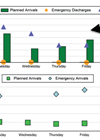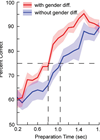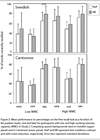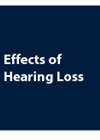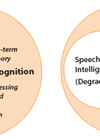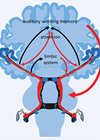Audiology features
Benchmarking for innovation in healthcare – an approach from Down Under and a gap in the National Health Service?
Benchmarking is a process of comparison between the performance characteristics of separate, often competing, organisations intended to enable each participant to improve its own performance [1]. Often, in healthcare, benchmarking is carried out by central government departments or regional agencies...
Workplace culture: observations of audiology in Northern England and Western Australia
Working with a diverse workforce and coping with transition forced me to consider the importance of cultural differences in the workplace. Only by trying to understand these differences can you understand others’ behaviour and what motivates the team. I have...
Why and what should hearing care professionals know about cognitive impairment and dementia
Good reasons to care about cognitive impairment and dementia in audiology If asking people what they fear most when getting to old age, it is cognitive decline that is named most often. This comes with the expectation of limitations in...
Inter-professional teamwork and hearing care for older adults with cognitive loss
There is growing awareness that hearing loss is linked to dementia [1]. The average first-time hearing aid user is about 70 years old. By this age, approximately 1 in 2 people have hearing loss and 1 in 7 have cognitive...
Secrets of the listening brain: what measuring the brain can tell us about hearing aid use and more
In a typical audiology clinic, on any given day, a person is waiting to see an audiologist to get a hearing aid (HA). It might have taken over 10 years to get to this point of considering a hearing aid(s)...
Cognitive spare capacity: what is it and why does it matter?
Cognition refers to thinking and memory. So why would cognition be a useful concept for ENTs and audiologists? Audition provides our main channel of communication and when we speak to each other, we want to exchange thoughts and remember what...
Cognitive effort and listening in everyday life
Dining with family members, amongst the clinking of dishes and glasses, the sounds of conversations and laughter, the husband, a user of hearing aids, misses his wife’s request to bring another bottle of wine. After a third try, the wife,...
How cognition influences hearing aid use
Introduction Hearing aids are designed to provide amplification for individuals with poor auditory sensitivity. Signal processing algorithms are designed and implemented in hearing aids to further enhance speech intelligibility and to improve listening comfort by attenuating unwanted background noise. Sarampalis...
The role of metrics in studies of hearing and cognition
Introduction When perceiving sounds in real-world listening environments, older adults encounter several sources of degradation that can interfere with the perceptual process (Figure 1). Target signals (i.e. the sounds that a listener wants to focus on) have specific acoustic characteristics...
The ear-brain connection in cochlear implant users: learning to listen again
While the cochlear implant (CI) has been a tremendous success in restoring hearing to deaf individuals, the implantation outcome still varies across CI users [1]. Some demographic factors, such as duration of deafness, and peripheral factors, such as electrode placement,...
The ear-brain connection: the role of cognition in neural speech processing
Audiologists and other hearing healthcare professionals have become increasingly interested in the importance of cognitive function in the assessment and management of hearing loss, especially in light of evidence suggesting a link between hearing loss and cognitive decline in older...
Could social isolation be a factor in the link between hearing loss and dementia?
In 1802, Beethoven wrote to his brothers Carl and Johann about his hearing loss: “You men who think or say that I am malevolent, stubborn, or misanthropic, how greatly do you wrong me. You do not know the secret cause...


